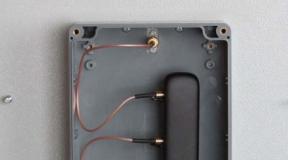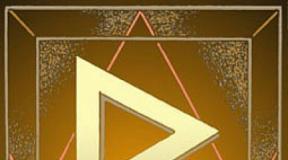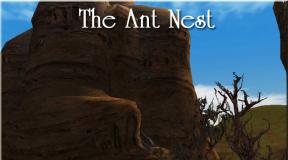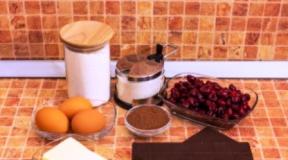Mechanized body gun d 44.
The 85-mm divisional gun D-44 was developed in the Design Bureau of Plant No. 9 (Uralmash) under the leadership of the chief designer Fedor Fedorovich Petrov in the second half of 1944, after a series of improvements, it passed the state. tests.

The 85 mm D-44 divisional gun was put into service in 1946. From 1946 to 1954, plant No. 9 (Uralmash) produced 10,918 guns.

This weapon can hit tanks, armored personnel carriers, self-propelled artillery guns, as well as other enemy armored vehicles.

It can also be used to fire at armored caps, embrasures of wood-and-earth and long-term points, destroy manpower and fire weapons located behind light shelters or outside shelters.

The constructive layout of the gun had a classic scheme: the barrel and bolt were superimposed on the gun carriage.

The barrel is a monoblock tube with a two-chamber muzzle brake, clutches and a clip breech.

The gun carriage includes: recoil devices, a balancing mechanism, a cradle, guidance mechanisms, an upper machine, the lower machine has suspension, wheels, beds, sights and a shield cover.

An active muzzle brake is screwed onto the muzzle of the barrel, which is a massive hollow cylinder. Windows (holes) are made on its generatrix.

The copier wedge semi-automatic shutter is designed to lock the barrel bore and fire a shot. To make the first shot, the shutter is opened manually, in the future, after each shot, the shutter opens automatically. The cradle is cylindrical cast of a clip-on type, during reeling and reeling it directs the barrel.

The recoil device includes a pneumatic knurler and a hydraulic recoil brake. A clip with nests is fixed on the cradle by welding, in which trunnions are placed that serve to connect with the upper machine.

The frame (upper machine) serves as the basis for the swinging part of the tool. Nitrogen or air is pumped into the balancing mechanism.

normal pressure nitrogen (air) in the balancing mechanism: when the swinging part is fixed in the stowed position from 54 to 64 kgf/cm2; at the highest elevation angle which is 35° from 50 to 60 kgf/cm2.

To create a hydraulic lock, 0.5 liters of AC spindle oil are poured into the balancing mechanism.

In the balancing mechanism, the pressure is regulated by a compensator when the air temperature changes in the range from -20° to +20°С.

The balancing mechanism with a compensator is filled with AC spindle oil (0.6 liters).

On the swinging part on the left, screw guidance mechanisms (rotary and lifting), a shield cover and a balancing mechanism are installed.

On the carrier shield, which is rigidly fastened to the lower folding, rear and front armor plates and the frame, the rotating part of the gun was placed.

A torsion suspension suspension system of the undercarriage is mounted on the shield.

The combat axle is made up of two straight axle shafts. Reinforced wheels from GAZ-AA, had tires GK. Hollow sliding beds SD-44 have coulters at the ends. They are pivotally connected to the bearing shield.
85-mm divisional gun D-44 Na final stage Second World War, there was a need for a more powerful divisional weapon than the 76-mm ZIS-3 puck. Various design bureaus proposed several options for new guns designed to destroy engineering structures and enemy manpower, destroy armored vehicles and long-term firing points. In particular, the design bureau of plant No. 9 (Uralmash) under the leadership of the chief designer F.F. Petrov in the second half of 1944 designed the 85-mm divisional gun D-44. After military tests, the gun was put into service in 1946 under the name "85-mm divisional gun D-44". One of its main creators is N.G. Kostrulin, was awarded the Stalin Prize of the 1st degree. The D-44 gun is made according to the classical scheme of an artillery gun, its distinctive features are the compact placement of guidance mechanisms, the low height of the line of fire and the possibility of transportation by mechanical traction at a speed of up to 60 km / h. The time of transferring the gun from traveling to combat position and back does not exceed one minute. The barrel of the serial gun D-44 (factory designation - 52-P-367) consisted of a monoblock pipe, breech, clutch, muzzle brake and clip. Muzzle brake - active type. Rollback brake - hydraulic. The recoil devices are placed in a clip above the barrel; when fired, they rolled back along with it. The normal rollback length is 580 ... 660 mm, the limit is 675 mm. The shutter is a vertical wedge with semi-automatic mechanical (copy) type. The cradle was a cast cylindrical clip, fixed on the upper carriage machine. It also has a lifting mechanism. The rotary mechanism - screw type. The balancing mechanism is of a pusher type, with a hydraulic air lock, it consisted of a single column located to the left of the barrel. Sights: panoramic sight M71-7 or mechanical - S71-7, optical sights OP1-7, OP2-7, OP4-7 or OP4M-7. To protect the calculation from bullets small arms and fragments of artillery shells and mines, a shield cover is fixed on the upper machine gun carriage. The lower carriage machine is equipped with two sliding tubular beds. Chassis - two-wheeled. Wheels - dimension 6.50-20 from a GAZ-AA truck, with a GK tire (filled with sponge rubber). The combat axis consisted of two straight axle shafts. Suspension of the gun - torsion. As ammunition, unitary cartridges with high-explosive fragmentation grenades (more than 12 types), coil-shaped sub-caliber shells, cumulative and smoke shells are used. The range of a direct shot of the BTS BR-367 at a target with a height of 2 m is 1100 m. At a range of 500 m, this projectile pierces an armor plate 135 mm thick at an angle of 90 °. The initial speed of the BPS BR-365P is 1050 m / s, armor penetration is 110 mm from a distance of 1000 m. Serial production of the D-44 was carried out at plant No. 9. From 1946 to 1954, 10918 guns were manufactured. D-44 was in service with the armies of the countries participating in the Warsaw Pact and was exported. In the 60s, China mastered the licensed production of guns under the index "type 56". At the end of 1948, the D-48 anti-tank gun was created on the basis of the D-44 (it was put into service in 1953). In 1956, for the Airborne Forces, a 16-barrel 140-mm rocket launcher RPU-14 (8U38) was mounted on the gun carriage of the D-44 divisional gun. High reliability and large reserves of 85-mm projectiles allow the D-44 cannon to be still in service with the RF Armed Forces, used for combat training and in combat operations. Weight, kg: 1.725 t Length, mm: 8.34 meters Barrel length, mm: 55.1 calibers Width, mm: 1.68 meters (in the stowed position) Crew (calculation), people: 7 Caliber, mm: 85 Elevation angle: -7° - +35° Steering angle: 54° Rate of fire, shots/min: 20-25 Muzzle velocity, m/s: 793 Maximum range, m: 15820 meters OP4-7, OP4M-7, APN-2, APN3-7
At the final stage of the Great Patriotic War When the Red Army switched to active offensive operations, the front urgently demanded a more powerful divisional gun than the standard 76-mm ZIS-3 gun of the 1942 model.
The transition to a larger caliber was necessary, since the Wehrmacht had new heavy tanks with powerful armor. In the course of development work carried out in 1944, several design bureaus at once proposed their own versions of 85-mm divisional guns, the best of which was recognized as the 85-mm divisional gun D-44, developed by OKB-9 F.F. Petrov at artillery plant No. 9 (Uralmash) in
Sverdlovsk. Its first prototype, manufactured at the plant number 92 (named after Stalin) in the city of Gorky, received the designation "ZIS-D-44".
In the second half of 1944 - at the beginning of 1945, the ZIS-D-44 gun was factory tested and fine-tuned already at factory No. 9. The modified version of the ZIS-D-44 entered the Gorohovets training ground for field testing - May 8, 1945. In tests, the gun showed a high rate of fire: with the correction of aiming at an angle of + 20 ° - 15 rds / min, and the maximum rate of fire without correction of the aiming was up to 20 - 22 rds / min. However, the ZIS-D-44 gun did not pass field tests, including due to unsatisfactory extraction of cartridge cases. And only after the end of the war, when the gun passed repeated ground and then military tests, in 1946 it was adopted by the Soviet army under the designation "85-mm divisional gun D-44".
The D-44 cannon is made according to the classical scheme of an artillery gun, its distinguishing features are the compact placement of guidance mechanisms, the low height of the firing line and the ability to be transported by mechanical traction at a high speed of movement. The barrel consisted of a monoblock pipe, breech, clutch, muzzle brake and clip. Along with an active muzzle brake, a significant part of the recoil force was absorbed by hydropneumatic recoil devices mounted in a clip above the barrel. When fired, they rolled back along with the barrel, while normal length rollback was 580 - 660 mm, limit - 675 mm. The gun had a vertical wedge gate with semi-automatic mechanical (copy) type. Its design and use of unitary rounds as ammunition ensured a rate of fire with aim correction of 13-15 rounds per minute, and a maximum rate of fire without aim correction of up to 25 rounds per minute.
The barrel was placed in a cradle, which is a cast cylindrical clip, mounted on the upper carriage machine. With the help of a lifting mechanism (which had one sector), also mounted on the upper machine, the barrel, together with the cradle, could rotate in a vertical plane in the range of angles from -7 ° to + 35 °. The horizontal aiming angle provided by the screw-type rotary mechanism was - 54 °. The balancing mechanism - pusher type, with hydraulic air lock, consisted of one column located to the left of the barrel.
As sighting devices, a panoramic sight or S71-7 sight, optical sights OP1-7, OP2-7, OP4-7 and OP4 M-7 were installed. APN-2 or APNZ-7 night sights could also be used.
To protect the calculation from small arms bullets and fragments of artillery shells and mines, a shield cover was fixed on the upper machine. Two sliding tubular beds were mounted on the lower carriage machine. The height of the line of fire was 825 mm. The chassis is two-wheeled, reinforced wheels from a GAZ-AA truck with tires filled with sponge rubber (GK) were used. The combat axis consisted of two straight axle shafts. The presence of torsion suspension allowed the gun to be towed by army trucks (6x6) or high-speed tracked tractors along the highway at speeds up to 60 km / h.
The time for transferring the gun from traveling to combat and back did not exceed one minute. The ammunition load of the D-44 gun included unitary shots with high-explosive fragmentation grenades (more than 12 types), coil-shaped sub-caliber shells, cumulative and smoke shells. The firing range of a high-explosive fragmentation grenade with a mass of 9.54 kg (initial speed 793 m / s) was 15,820 m. An armor-piercing caliber projectile of the D-44 gun from a distance of 500 m at a target 2 m high at an angle of 90 ° pierced armor 135 mm thick, and at a distance of 2000 m - 100 mm armor.
From 1945 to 1954, Plant No. 9 (Uralmash) produced more than 12,500 D-44 guns.
The 85-mm divisional gun D-44 was in service with the Soviet army and the armed forces of the countries participating in the Warsaw Pact, and was also exported. In 1948, on the basis of the D-44, the 85-mm anti-tank gun D-48 was created, which was adopted by the Soviet army in 1952. In 1954, another modification of this gun entered service with the Soviet Army - the 85-mm self-propelled gun SD-44, created in OKB-9 of plant No. 9 at the end of 1948. The project for its creation provided that it would be transported over long distances by wheeled or tracked tractors, and its movement on the battlefield would be carried out independently using an auxiliary power unit. The SD-44 carriage differed from its prototype in that a 14 hp motorcycle engine was mounted on one of its frames. With. Torque from the engine was transmitted to the wheels of the gun through the cardan shaft, differential and axle shafts.
The gearbox, which is part of the transmission, provided 6 forward gears and 2 gears reversing. A seat was also attached to the frame for one of the calculation numbers, which acts as a driver and a steering wheel that controlled an additional, third, wheel mounted on the end of one of the frames. To illuminate the road in the dark, a headlight was installed at the ends of the beds, and to overcome particularly difficult sections of the path, an original device was provided on the cannon - a self-puller - a drum on wheels and a cable attached to the shield.
The mass of the SD-44 gun in combat position has increased to 2250 kg. In the self-propelled mode, the gun moved the barrel back, while it housed both the entire crew and part of the ammunition load. On the highway, the SD-44 cannon developed speeds of up to 25 km / h, was able to independently overcome slopes up to 27 °, fords up to 0.5 mm deep and snow drifts 0.30-0.65 m high. km.
For long distances, the gun was towed by a wheeled or tracked tractor with maximum speed up to 60 km/h. From 1954 to 1957, plant No. 9 converted from D-44 guns into self-propelled guns SD-44 and produced about 700 new SD-44s. They entered service with the artillery units of the airborne divisions. For the parachute landing of the SD-44, special landing platforms were developed.
In 1957, the gun underwent another upgrade - 150 modified SD-44N guns were equipped with night sights. Currently, the D-44 gun and its modifications continue to be in service with the Russian army.
Years of release - 1945 - 1957
In total, more than 12,500 units were produced.
Caliber - 85 mm
Weight in combat position - 1725 kg
Barrel length - 4685 mm
The length of the threaded part - 3496 mm
Calculation - 6 people
Travel speed - 60 km/h
Rate of fire - 25 rds / min
The greatest firing range - 15,820 m
Direct shot range - 1100 m
Shooting angles:
Horizontal - 54°
Vertical - 7° +35°
The Soviet 85-mm divisional gun D-44 is a universal artillery system designed to destroy military facilities and enemy fortifications in the front line, to destroy armored vehicles and support infantry during an offensive.
The history of the creation of the D-44 gun and mass production
Even at the final stage of the Great Patriotic War, Soviet designers of field artillery began to develop a fundamentally new division-level artillery system. Despite the fact that the 76-mm ZiS-3 gun, which was in service, became the main field weapon of the Red Army during the war years, its performance characteristics and ballistic properties left much to be desired. The troops needed a powerful, long-range field gun capable of enhancing the firepower of divisions and corps.
The Soviet 85-mm D-44 cannon, created in the Design Bureau of Plant No. 9, became such a means of reinforcement. The design work, which began in 1944, was headed by the famous Soviet designer F.F. Petrov. Six months later, the new gun was ready for testing and presented to the attention of the state commission. In 1946, a new gun, called the 85-mm D-44 divisional gun, was adopted by the Soviet artillery units.
Only one enterprise in the USSR was engaged in the manufacture of guns - plant No. 9, the current Uralmash. A total of 10,918 guns were manufactured between 1946 and 1954.
Technical parameters and tactical characteristics of the D-44 gun
- Calculation - 6 people.
- Combat weight - 1.72 tons.
- Charging is unitary.
- The initial speed of the armor-piercing tracer projectile is 800 m/s.
- Rate of fire: 20-25 rds / min.
- The maximum firing range is 15820 m.
- The range of a direct shot with an armor-piercing tracer projectile is 1100 m.
- Armor penetration by an armor-piercing tracer projectile: at a distance of 1000 m - 100 mm.
- The mass of a shot with an armor-piercing tracer projectile is 15.68 kg.
- The main types of ammunition: high-explosive fragmentation, armor-piercing tracer shells.
- Transfer time from traveling to combat position: 40-60 sec.
- Method of transportation: transported by Ya-12, MT-L and MTLB tractors, trucks.
The gun began to enter service with the artillery units of the Soviet Army in post-war years. The bulk of the new guns were equipped with artillery units of the Western Group of Forces in Germany, where Soviet troops opposed the tank units of the allied states.
The combat use of the 85-mm D-44 divisional gun of the 1946 model was noted in a number of armed conflicts in the second half of the 20th century. These are participation in the Korean War, the Indo-Pakistani conflict and the Arab-Israeli wars.
Photo

The D-44 anti-tank gun of 85 mm caliber was designed in the design bureau of plant No. 9 (Uralmash). This weapon can hit tanks, armored personnel carriers, self-propelled artillery guns, as well as other enemy armored vehicles. It can also be used to fire at armored caps, embrasures of wood-and-earth and long-term points, destroy manpower and fire weapons located behind light shelters or outside shelters.
The constructive layout of the gun had a classic scheme: the barrel and bolt were superimposed on the gun carriage.

The barrel is a monoblock tube with a two-chamber muzzle brake, clutches and a clip breech. The gun carriage includes: recoil devices, a balancing mechanism, a cradle, guidance mechanisms, an upper machine, the lower machine has suspension, wheels, beds, sights and a shield cover.
An active muzzle brake is screwed onto the muzzle of the barrel, which is a massive hollow cylinder. Windows (holes) are made on its generatrix. The copier wedge semi-automatic shutter is designed to lock the barrel bore and fire a shot. To make the first shot, the shutter is opened manually, in the future, after each shot, the shutter opens automatically. The cradle is cylindrical cast of a clip-on type, during reeling and reeling it directs the barrel. The recoil device includes a pneumatic knurler and a hydraulic recoil brake. On the cradle, a clip with nests is fixed by welding, in which pins are placed that serve to connect with the upper machine. The frame (upper machine) serves as the basis for the swinging part of the tool. Nitrogen or air is pumped into the balancing mechanism. The normal pressure of nitrogen (air) in the balancing mechanism: when the swinging part is fixed in the stowed position, from 54 to 64 kgf/cm2; at the highest elevation angle which is 35° from 50 to 60 kgf/cm2. To create a hydraulic lock, 0.5 liters of AC spindle oil are poured into the balancing mechanism. In the balancing mechanism, the pressure is regulated by a compensator when the air temperature changes in the range from -20° to +20°С.
The balancing mechanism with a compensator is filled with AC spindle oil (0.6 liters). On the swinging part on the left, screw guidance mechanisms (rotary and lifting), a shield cover and a balancing mechanism are installed. On the carrier shield, which is rigidly fastened to the lower folding, rear and front armor plates and the frame, the rotating part of the gun was placed. A torsion suspension suspension system of the undercarriage is mounted on the shield. The combat axle is made up of two straight axle shafts. Reinforced wheels from GAZ-AA, had tires GK. Hollow sliding beds SD-44 have coulters at the ends. They are pivotally connected to the bearing shield.


Normal rollback length:
- on a full charge from 580 to 660 millimeters;
- on a reduced charge from 515 to 610 millimeters;
- the maximum rollback length is 675 millimeters (marked with the inscription "Stop").
For direct fire and from closed positions, the D-44 anti-tank gun is equipped with an S71-7 sight, an optical sight OP1-7, OP2-7, OP4-7, OP4M-7. Also, APN3-7 or APN-2 night sights can be used. On the cannon, the mechanical C71-7 must be permanently fixed; the panorama is filmed and stored in a regular box.
rate of fire anti-tank gun D-44: at an angle of +20 degrees with aiming correction, it is 15 rounds per minute; at an angle of 0 degrees - 11-13 shots per minute; maximum rate of fire 20 - 22 rounds per minute.
For firing, unitary loading artillery rounds are used, having various projectiles: armor-piercing sub-caliber, cumulative fragmentation and high-explosive fragmentation.
Ammunition for the anti-tank gun D-44:
The UO-367 and UO-365K shots consist of a steel solid-body fragmentation projectile 0-365K, a head fuse, a steel (brass) sleeve, a KV-4 capsule sleeve is screwed into its bottom part point, and a powder warhead (UO-365K has a full and UO-367 reduced charge).
UO-367A consists of a projectile 0-367A (solid-body fragmentation steel cast iron), a head fuse, a steel (brass) sleeve, a KV-4 primer sleeve screwed into the bottom of the point and a combat reduced powder charge.
UBR-365K consists of a BR-365K projectile (a sharp-headed armor-piercing tracer), an MD-8 fuse with a tracer is screwed into the point of the bottom part, a steel (brass) sleeve, a KV-4 capsule sleeve is screwed into the point of the bottom part and a gunpowder combat full charge.
UBR-365 consists of a BR-365 projectile (blunt-headed armor-piercing tracer with a ballistic tip), an MD-7 fuse equipped with a tracer is screwed into the point of the bottom part, a steel (brass) sleeve, a KV-4 capsule sleeve is screwed into the point of its bottom part and a complete military powder charge.
UBR-367P consists of a BR-367P projectile (armor-piercing tracer sub-caliber having a ballistic tip), the tracer is screwed into the point of the bottom of the projectile, a steel (brass) sleeve, the KV-4 capsule sleeve is screwed into the point of its bottom, combat powder charge.
UBR-365P and UBR-367PK consist of a BR-365P tracer sub-caliber projectile, the tracer is screwed into the point of its bottom part, a steel (brass) sleeve, the KV-4 capsule sleeve is screwed into the point of its bottom part, and a powder warhead.
UBR-365P differs from the UBR-367PK shot only in the design of the charge.
UBK1 has a cumulative non-rotating projectile BK2 with a No. 9 tracer and a GPV-1 head fuse, a steel or brass sleeve, a KV-4 primer sleeve screwed into its point, a live igniter and a charge placed in the sleeve and secured by a cylinder and a cardboard circle.
UBK1M differs from the UBK1 shot only in that BK2M, which has a copper cumulative funnel instead of a steel one.
UD-367 has a D-367 smoke steel projectile, the KTM-2 head fuse is screwed into the point of its head part, a steel (brass) sleeve, the KV-4 primer sleeve is screwed into the point of its bottom part, combat reduced powder charge.
ZUD1 with a full charge and ZUD2 with a reduced charge, unlike UD-367, are equipped with a KTM-1-U fuse.
The PBR-367 shot with the PBR-367 shell has the same device as the shot with armor-piercing shells. PBR-367 does not have a fuse and is not equipped with an explosive.
Basic data:
The initial speed of a fragmentation grenade (with a reduced charge) is 655 m / s;
The initial speed of a fragmentation grenade (with a full charge) is 793 m / s;
The initial speed of the armor-piercing tracer is 800 m / s;
The initial speed of the sub-caliber armor-piercing tracer is 1050 m / s;
The mass of a full charge is 2.6 kilograms;
The mass of the reduced charge is 1.5 kilograms;
The mass of the fragmentation projectile is 9.54 kilograms;
The mass of an armor-piercing tracer projectile is 9.2 or 9.34 kilograms;
The mass of a sub-caliber armor-piercing tracer projectile is 4.99 kilograms;
The mass of a shot having a high-explosive fragmentation projectile is 16.3 kilograms;
The mass of a shot with an armor-piercing tracer projectile is 15.68 kilograms;
The mass of a shot having a sub-caliber armor-piercing tracer projectile is 15.68 kilograms;
The maximum pressure of powder gases is 2550 kgf/cm;
The greatest tabular range is 15820 meters.
In service with a separate artillery anti-tank battalion of a motorized rifle or tank regiment (two anti-tank artillery batteries consisting of two fire platoons), 6 pieces per battery (in division 12).

Ammunition unified with SD-44.
The standard means of propulsion for an anti-tank gun is the GAZ-66 or GAZ-63.
Transportation speed:
- off-road - 15 km / h.
- on country roads and cobblestone pavement - 35 km / h;
- on paved roads - 60 km / h.
PTP D-44 can be transported by air in cargo military transport aircraft An-12, Il-76, An-22.
To roll into position manually, a special roller is placed under the trunk part of the gun, fixed in the stowed position and transported on the beds.
Technical characteristics of the anti-tank gun D-44:
Caliber - 85 millimeters;
Barrel length - 4685 millimeters (55 calibers);
The length of the rifled part of the barrel - 3496 millimeters (41 calibers);
The number of grooves - 24;
The volume of the charging chamber with a fragmentation projectile 0-365K - 3.94 dm3;
The height of the line of fire - 825 mm;
Vertical pointing angle - -7 ° + 35 °;
Pointing angle on the horizon - 54 °;
The length of the system is 8340 millimeters;
The height of the line of fire - 825 millimeters;
Width - 1680 millimeters;
Height - 1420 millimeters;
Clearance - 350 millimeters;
Track width - 1434 millimeters;
Weight in combat position - 1725 kilograms;
Barrel with a shutter - 718 kilograms;
Shutter - 31.6 kilograms;
The swinging part - 920 kilograms;
Retractable parts (barrel with recoil devices and bolt) - 785 kilograms;
Cradles - 99 kilograms;
Rollback brakes assembled - 42 kilograms;
Assembled knurler - 32 kilograms;
Balancing mechanism - 13 kilograms;
Assembled upper machine - 71 kilograms;
Assembled shield cover - 83 kilograms;
Assembled lower machine - 133 kilograms;
Underarm roller - 12.3 kilograms;
Wheels (with hub) - 81 kilograms;
Chassis (wheels, suspension and combat axle) - 222 kilograms;
The carriage in assembled form - 972 kilograms:
Ski installation - 170 kilograms;
Transfer from combat to traveling position - 1 minute;
Aiming rate of fire of the gun - 10-15 rounds per minute;
The maximum rate of fire of the gun is 20 rounds per minute;
Transportation speed according to good roads- 60 km / h;
The speed of transportation on the cobblestone pavement - 35 km / h;
Off-road transportation speed - 15 km / h.
Calculation - 5 people.



















